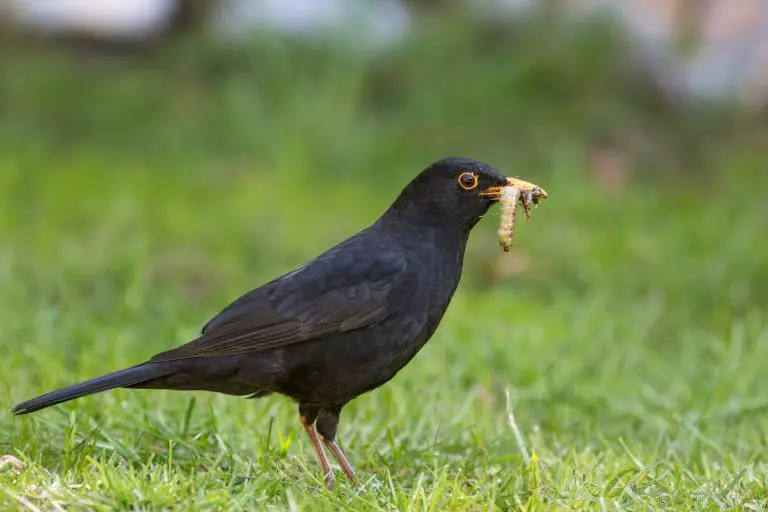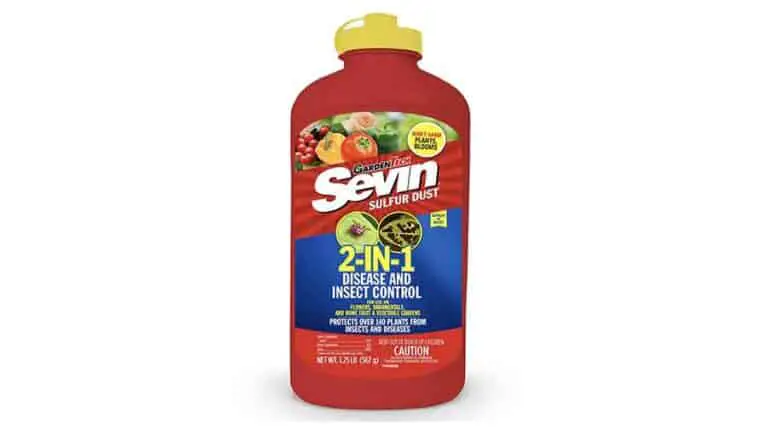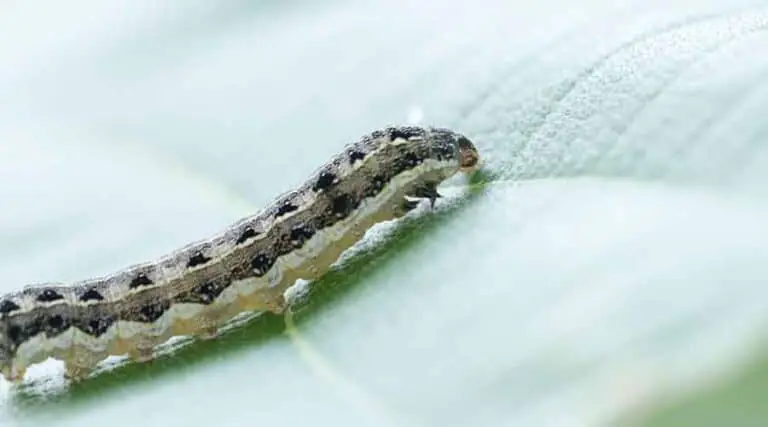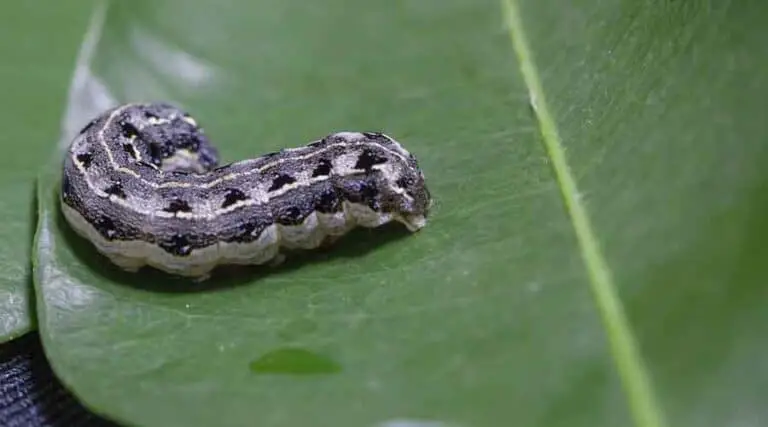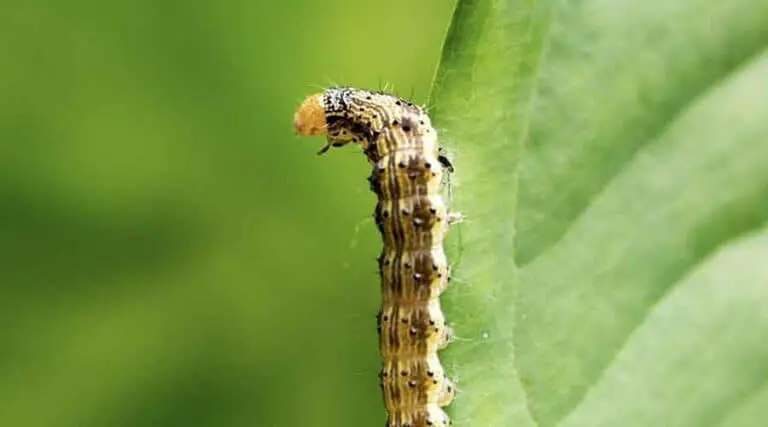Where Do Cutworms Live: Uncovering Their Habitat & Behavior
Cutworms are a group of moth larvae that pose a significant threat to various plants and crops. They get their name from their feeding habits; these pests are known for cutting down plants at the base as they feed on the stems, leaves, and roots during the night. Understanding where cutworms live and their lifecycle can help in designing effective control measures to protect gardens, crops, and turfgrass.
These larvae usually reside in the soil, making it difficult to spot them before they cause significant damage. They thrive in grassy areas and are often found in gardens, crop fields, and golf courses. Cutworms are attracted to areas with moist soil and abundance of organic material, such as plant residue and decaying vegetation, as these provide both food and shelter.
It is important to monitor and manage cutworm populations early on, as they can rapidly destroy crops and plants, leading to potential economic losses in agriculture and horticulture. Identifying their habitat is crucial in designing preventative measures and targeted pest control strategies.
What Are Cutworms
Cutworms are the larval stage of various moth species belonging to the Noctuidae family. They are known to cause significant damage to a wide variety of plants by feeding on their stems and leaves. These pests earned their name due to their habit of “cutting” the plant off at its base.
The behavior of cutworms largely depends on their species. Generally, they are nocturnal creatures, hiding during the day and emerging at night to feed on plants. Cutworm larvae typically live in the top layer of soil, close to the plants they target. Some species may also hide inside cracks and holes in the ground.
There are numerous types of cutworms, including the pale western cutworm, black cutworm, and variegated cutworm, which can cause substantial harm to crops and gardens. While they are most commonly associated with attacking young seedlings, some varieties may consume the foliage and stems of more mature plants as well.
Cutworm infestations can be challenging to control, as they are often difficult to detect due to their hidden nature and nocturnal behavior. Moreover, traditional controls like poisoned bran mash may not be effective against certain species, such as the pale western cutworm. Effective control measures usually involve targeted treatments with suitable insecticides, monitoring the population, and implementing cultural practices to minimize the chances of infestation.
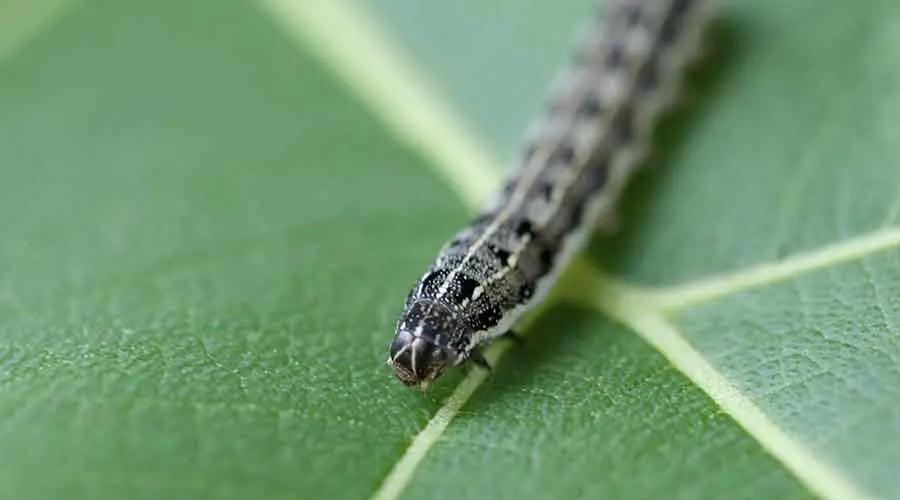
Where Cutworms Live
Geographical Distribution
Cutworms are commonly found across various parts of the world, especially in North America. The geographical distribution of specific cutworm species can vary. For example, the pale western cutworm is prevalent in the central and western regions of the United States and Canada. On the other hand, the black cutworm is more widespread and is a pest of turfgrass throughout the United States and Canada, according to an academic study.
Habitats
Cutworms inhabit various types of environments, depending on their food sources and preferences. They are commonly found in agricultural fields, turfgrass, and gardens. Cutworm larvae thrive in soil, where they feed on the roots and stems of plants, often causing significant crop damage. Some cutworm species, like the Western Bean Cutworm, can also survive on transgenic corn that produces the Cry1Ab protein, which provides them with nutrients and allows them to become more competitive against other insects, as mentioned in this scientific article.
In natural habitats, cutworms can be found in grassy areas and meadows. They may also be preyed upon by other insects, animals, and birds, which helps to regulate their populations. For example, grizzly bears in the Yellowstone ecosystem feed on army cutworm moths, as reported by this scientific study.
In various habitats, cutworms can adapt their behavior according to the conditions. For example, some species are known to be more active during the daytime, while others are nocturnal. Generally, cutworm larvae remain hidden in the soil during the day and come out to feed on plants and other insects at night.
Life Cycle of Cutworms
Cutworms are the larval stage of moths belonging to the family Noctuidae. They feed on a variety of plants, often causing significant damage to agricultural crops. Understanding their life cycle is essential to effectively manage and control their populations.
The life cycle of cutworms typically consists of four stages: egg, larva, pupa, and adult moth. The duration of each stage may vary depending on the specific species and environmental conditions.
Eggs
Female moths lay their eggs on the leaves, stems, or soil surface of host plants. The number of eggs laid depends on the species, with some capable of laying hundreds of eggs in a single night. Eggs are typically round or oval in shape and might be laid singly or in clusters. They usually hatch within a week, depending on temperature and humidity.
Larvae
Upon hatching, the larvae (cutworms) begin feeding on plant foliage or stems close to the soil surface. Most cutworm species are nocturnal and will hide in the soil during the day. Larvae go through several stages, known as instars, as they grow. Each instar is followed by a molting period, during which the larvae shed their old skin and emerge larger. The larval stage can last anywhere from 3 to 6 weeks, again influenced by environmental conditions and the specific species. Some published studies, like the one on the life cycle of Agrotis malefida, can provide insights into the life cycle of specific cutworm species.
Pupae
When cutworm larvae have reached their final instar, they will burrow deeper into the soil to pupate. During this stage, they transform into a non-feeding, immobile state and develop into adult moths. The pupal stage typically lasts 2-4 weeks, depending on temperature and moisture conditions.
Adult Moths
Once fully developed, adult moths emerge from the pupae and begin searching for mates. After mating, female moths will lay their eggs, starting the life cycle anew. Adult moths may live for several weeks, but their primary function is reproduction; they don’t cause direct damage to plants like the larval stage does.
In summary, the life cycle of cutworms involves four distinct stages: egg, larva, pupa, and adult. The duration of each stage and the overall life cycle can vary depending on the species and environmental conditions affecting growth and development. Knowing their life cycle is crucial for effective management and control strategies in agriculture.
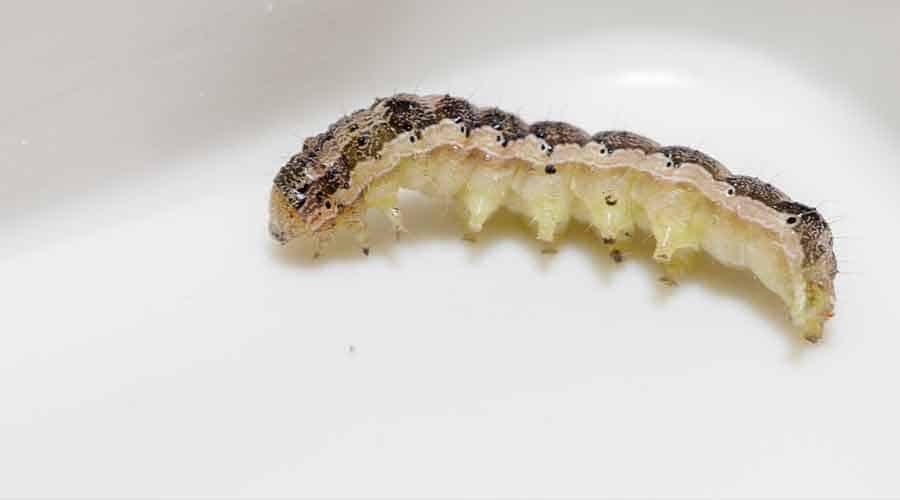
Various Types of Cutworms
Cutworms are the larvae of certain noctuid moths, which can be destructive to plants due to their feeding habits. There are several species of cutworms found across the globe, each with its unique habitat and lifecycle. In this section, we will discuss some of the common types of cutworms and the environments they inhabit.
Black Cutworm
The black cutworm (Agrotis ipsilon) is a widespread pest, commonly found in North America and Europe. It prefers low-lying vegetation and is particularly destructive to corn, soybeans, and other crops. The larvae burrow into the soil during the day and surface at night to feed on plant tissues. In addition to crop damage, black cutworms can also be found living and feeding on turfgrass.
Pale Western Cutworm
The pale western cutworm (Agrotis orthogonia) is a significant pest in the western United States and Canada, where it is particularly damaging to wheat, barley, and other cereal crops. This species prefers areas with low rainfall and well-drained soils, as shown in a study on the distribution of the pale western cutworm. The larvae feed on the stems of plants near the soil surface, often severing the plant and stunting its growth.
Variegated Cutworm
The variegated cutworm (Peridroma saucia) is a common pest found in North America, Europe, and parts of Asia. It feeds on a wide range of host plants, including vegetables, ornamentals, and field crops. The variegated cutworm prefers to feed on the leaves of plants rather than stems. Its habitat includes gardens, fields, and forests with dense vegetation cover.
Army Cutworm
The army cutworm (Euxoa auxiliaris) is a migratory pest found in the western United States and Canada. It is known for their destructive tendencies on crops such as wheat, alfalfa, and sugar beets. The larvae can gather in large numbers and consume massive amounts of plant material, thus earning the name “army cutworm.” Grizzly bears have even been observed feeding on army cutworm moths in the Yellowstone ecosystem.
While these are just a few examples of the many cutworm species, understanding their habitat preferences and feeding patterns can help with effective pest management and prevention efforts.
Signs of Cutworm Infestation
Cutworms can be a serious problem for crops and ornamental plants. Identifying the presence of these pests in your garden or field is critical in implementing timely and effective management strategies. Here are some key signs of cutworm infestation:
- Damaged seedlings: One of the most common and visible signs of cutworms is the presence of damaged or severed seedlings. Cutworm larvae feed on the stems of young plants, often cutting them off at or near the soil surface. This results in wilted or fallen seedlings in your garden or field.
- Presence of holes or notches in foliage: Cutworms can also feed on leaves, particularly for older larvae or when they are present in large numbers. Holes or notches in plant foliage can be an indication of cutworm activity, though it’s important to consider other potential causes such as slugs or rabbits.
- Nocturnal activity: Cutworms are generally active at night, which can make them difficult to spot during the day. If you suspect a cutworm infestation, try examining your garden or fields at night for evidence of their activity.
To further confirm a cutworm infestation, you can search for them directly in the soil:
- Examining the soil: Cutworm larvae live in the soil, and you can often find them by checking closely around the base of affected plants or by digging around the area where damage has occurred. They are typically curled up and will uncurl when disturbed.
- Using baits: Another effective method for detecting cutworms is to use a simple bait like a piece of cardboard or moistened cloth laid on the soil surface. Cutworms will often gather beneath such shelters, making it easier to locate and identify them.
One example of a cutworm species, the Citrus Cutworm, can cause economic damage to citrus cultivation through the destruction of leaves and stems. Early detection and control methods are essential to minimize losses and maintain healthy crops.
Controlling Cutworms
Cultural Methods
Cultural methods are essential for controlling cutworms in your garden or agricultural area. These practices focus on creating an unfavorable environment for cutworms to thrive. Here are some of the effective techniques:
- Rotate crops to avoid giving the cutworms a continuous food source.
- Plow or till the soil in fall and spring to expose cutworm larvae and eggs to natural predators and harsh weather conditions.
- Remove weeds and other debris from the area, as they often serve as a hiding place for cutworms.
- Place physical barriers, such as collars made from aluminum foil or plastic, around young plants to prevent cutworms from attacking them.
Biological Control
Another effective way to control cutworms is through the use of biological agents, which can help reduce their populations without harmful effects on the environment. Some of these options include:
- Introducing natural predators, such as birds, ground beetles, and parasitic wasps to your garden or field.
- Using entomopathogenic nematodes, which are microscopic organisms that can infect and kill cutworm larvae.
- Applying microbial control agents like the Agrotis ipsilon Multiple Nucleopolyhedrovirus (AgipMNPV), which specifically targets black cutworms in turfgrass.
Chemical Control
When other methods fail or are insufficient to manage cutworms, resorting to chemical control might be necessary. Here are some chemicals that have been found effective in controlling cutworm populations:
- Spinosad: A natural compound derived from the bacterium Saccharopolyspora spinosa that is toxic to cutworms while being safe for humans and the environment.
- Neonicotinoids: A class of synthetic insecticides, which when combined with entomopathogenic nematodes, has been shown to be effective in controlling black cutworms in the seedling phase of canola crops.
- Other chemical insecticides: According to a review study, six insecticides, namely profenofos, indoxacarb, spinosad, abamectin, emamectin benzoate, and fufenozide, display significant efficacy in managing cutworm infestations.
Chemical control should always be employed responsibly, following label instructions, and considering its impact on the surrounding environment and beneficial organisms.
Preventing Future Cutworm Infestations
Cutworms are soil-dwelling caterpillars that feed on the stems and roots of various plants, resulting in severe crop damage. Understanding their habitat is crucial for implementing effective pest control strategies. Cutworms typically live in soil and plant debris and emerge at night to feed.
To prevent cutworm infestations, consider the following approaches:
- Cultural Practices: Till and cultivate the soil in late fall or early spring to expose cutworm larvae, making them vulnerable to predators and harsh weather conditions. Maintain clean fields by removing plant debris and weeds, which can serve as potential hiding spots for cutworms.
- Planting Time: Early planting may help reduce cutworm damage, as crops will have a chance to grow stronger and more resilient before cutworms complete their development. Adjust planting dates based on local cutworm activity.
- Crop Rotation: Rotate susceptible crops with those less attractive to cutworms. This disrupts their life cycle and helps reduce local populations.
- Pesticides: Use of chemical insecticides can be an effective way to manage cutworm populations. It is essential to monitor the effects of such compounds to avoid any negative environmental impacts. Be sure to follow label instructions and consult with local guidelines.
- Biological Control: Encourage natural predators of cutworms, such as birds, predatory beetles, and parasitic wasps by maintaining habitats that support them. Additionally, the use of biocontrol agents, such as baculoviruses, can help reduce cutworm susceptibility.
By implementing a combination of these strategies, you can significantly reduce the risk of cutworm infestations in your fields and gardens.


